Tamron SP 150-600 mm f/5-6.3 Di VC USD
8. Vignetting
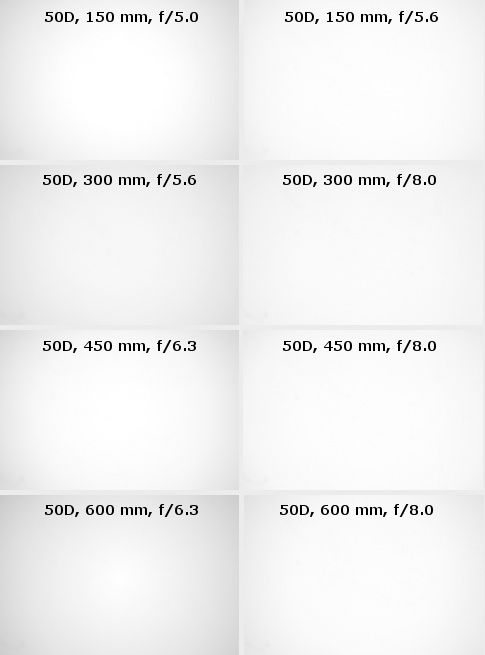
At the maximum relative aperture and at the shortest focal length the vignetting is just 16% (-0.49 EV) and it decreases to an imperceptible level of 8% (-0.23 EV) right after you stop down the aperture to f/5.6 so just by 1/3 EV.
Please Support UsIf you enjoy our reviews and articles, and you want us to continue our work please, support our website by donating through PayPal. The funds are going to be used for paying our editorial team, renting servers, and equipping our testing studio; only that way we will be able to continue providing you interesting content for free. |
- - - - - - - - - - - - - - - - - - - - - - - - - - - - - - - - - - - - - - - - - - - - - - - -
At 300 mm focal length there are even less problems – at the maximum relative aperture the vignetting amounts to just 12 % (-0.37 EV) and it decreases to 6% (-0.18 EV) by f/8.0. A similar situation can be observed at 450 mm. By f/6.3 the vignetting is 15% (-0.46 EV) and it decreases to 7% (-0.21 EV) by f/8.0.
The biggest chance to notice any vignetting you get at the maximum focal length where, by f/6.3, it reaches 19% (-0.61 EV). Fortunately already by f/8.0 it becomes practically imperceptible, getting to 9% (-0.29 EV).
For obvious reasons there are more problems with the brightness loss in the frame corners, if you attach the tested lens to a full frame camera. The thumbnails, shown below, let you know what should be expected.
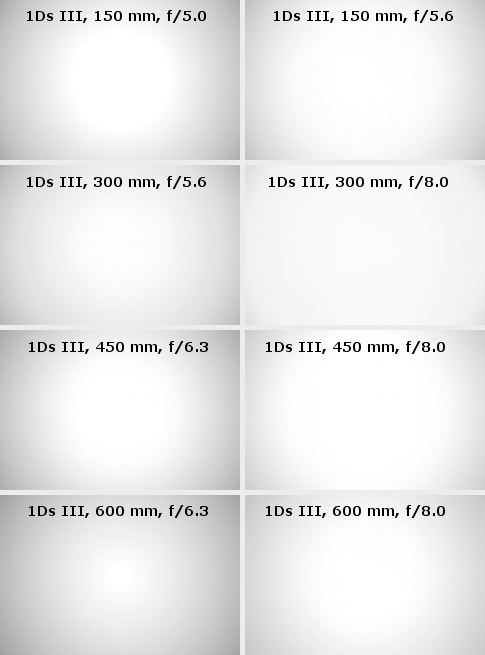
At the shortest focal length and the maximum relative aperture the vignetting reaches a noticeable level of 35% (-1.25 EV). By f/5.6 it decreases to 24% (-0.80 EV) and by f/8.0 it becomes imperceptible (8%).
A bit better situation can be seen at 300 mm focal length. At the maximum relative aperture the light fall-off in the corners gets to 28% (-0.93 EV) and it decreases to 12% (-0.36 EV) by f/8.0. By f/11 the vignetting becomes imperceptible, amounting to just 5% (-0.16 EV).
The aberration, described in this chapter, starts increasing when you pass to the longer end of the focal range. At the combination of 450 mm and f/6.3 the vignetting amounts to 33% (-1.17 EV) and it drops to 20% (-0.63 EV) on employing f/8.0 aperture. By f/11 and f/16 it is respectively 12% (−0.36 EV) and 5% (−0.14 EV).
At 600 mm and with the lens wide open you must take into account the loss of 37% of light (-1.34 EV) in the frame corners. By f/8.0 that aberration is still noticeable (but decreasing to a moderate level) as it reaches 22% (-0.70 EV). The problems disappear only by f/11 and f/16 where the vignetting is respectively 12% (−0.39 EV) and 5% (−0.14 EV).
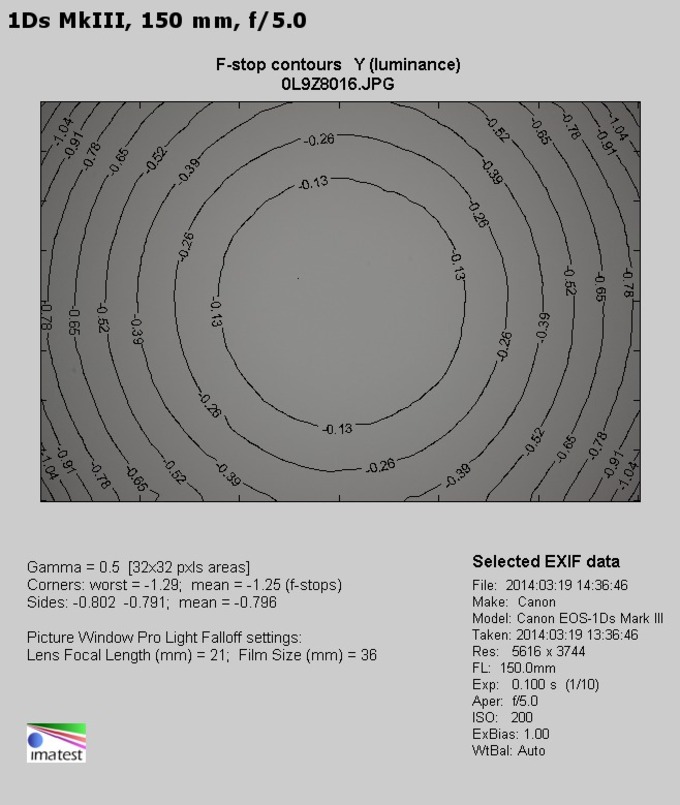 |
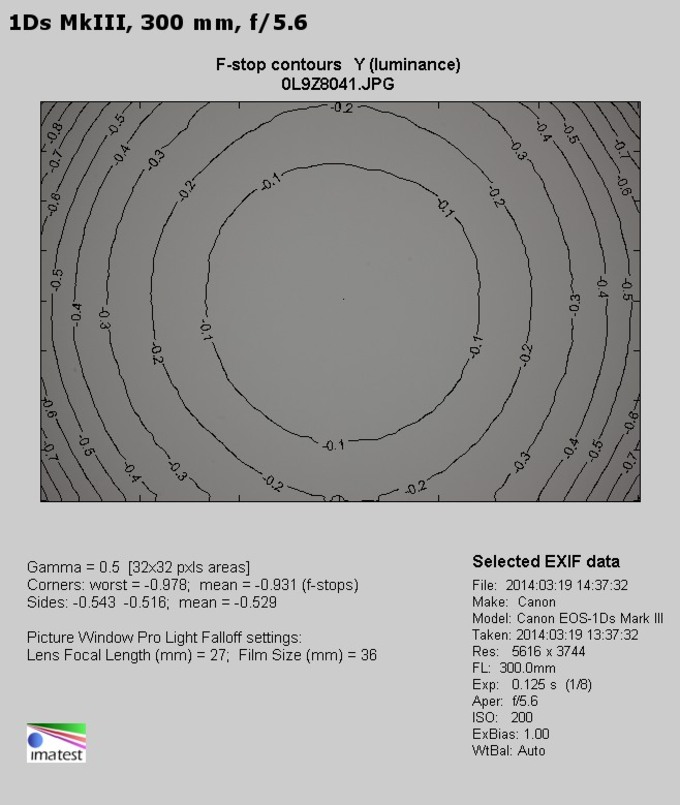 |
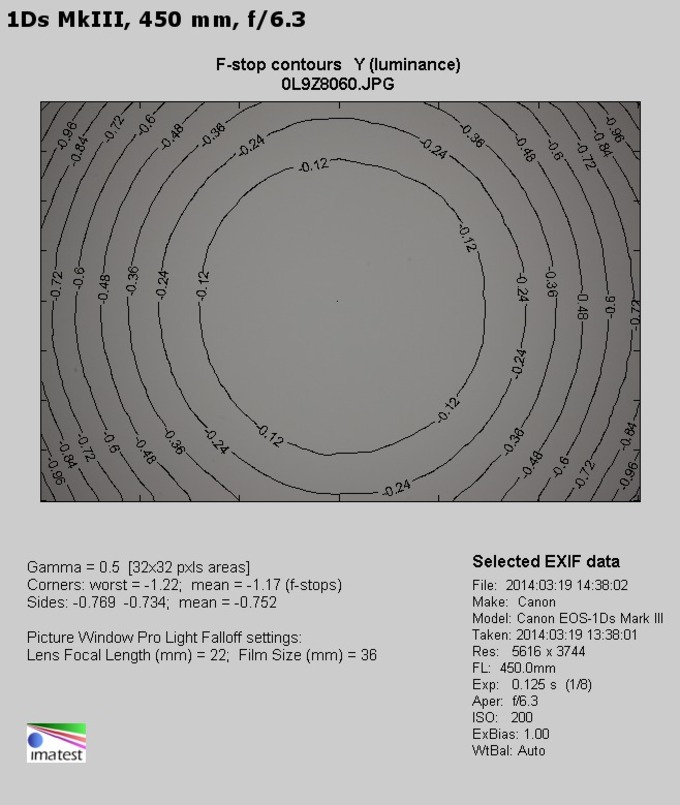 |
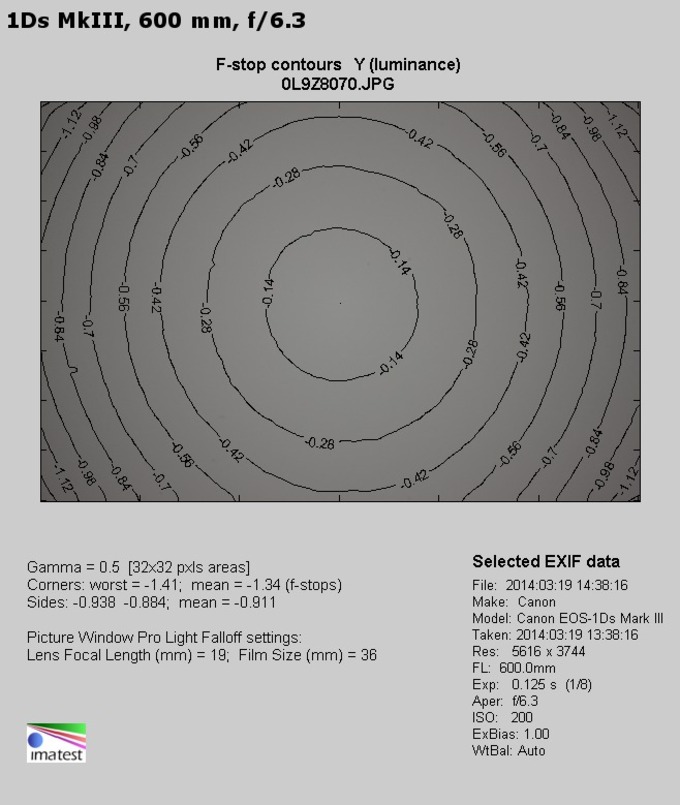 |






